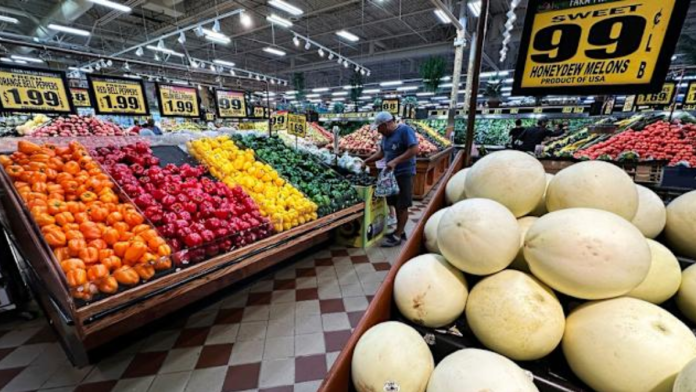The United States is facing a deepening crisis as the federal government shutdown stretches into its 25th day, leaving millions of Americans uncertain about their next meal. The Department of Agriculture (USDA) has announced that food benefits under one of the country’s largest social assistance programs will not be issued in November.
This means that more than 41 million people who depend on the Supplemental Nutrition Assistance Program (SNAP) could soon lose access to food support. The USDA said in a public statement that “the well has run dry,” confirming that there will be no benefits distributed on November 1. The department also stated that it will not use its emergency reserves to continue the program during the shutdown.
For many low-income families, these benefits are not optional—they are a lifeline. In some states, such as New Mexico, as many as 21% of residents depend on these monthly payments. Without this assistance, millions may be left struggling to feed their families and keep up with rising food costs.
Political standoff blocks relief measures
The suspension of food benefits comes amid a bitter political deadlock in Washington. Lawmakers from both the Republican and Democratic parties remain divided over how to fund and reopen the federal government. The shutdown, now the longest in years, began over disagreements on government spending priorities.
More than 200 members of the House of Representatives have urged the USDA to use its emergency funding reserves to continue providing food aid through November. However, an internal memo confirmed that the department would not do so. This decision has left millions of Americans caught in the middle of a political standoff.
While politicians debate, ordinary citizens are paying the price. The shutdown has already disrupted several essential services, delayed salaries for federal workers, and closed national parks. Now, it threatens to deepen food insecurity across the nation.
States declare emergencies to tackle hunger
As the federal government remains at a standstill, several state leaders have stepped forward to prevent a food crisis. The governors of Louisiana and Virginia have declared states of emergency to release funds for hunger relief efforts. These emergency measures will help local communities prepare for a surge in food demand if federal aid stops in November.
Food banks and community organizations across the country are already seeing rising demand. Volunteers are working extra hours to collect donations, stock food shelves, and prepare meal kits. Many non-profit organizations say they are bracing for one of the largest hunger surges in recent memory if the shutdown continues much longer.
However, even with these emergency steps, state officials admit that local efforts cannot fully replace the reach and resources of the SNAP program. States can offer temporary relief, but they lack the long-term funding and infrastructure that federal programs provide.
Community leaders are calling on Congress to find a quick solution. They warn that the absence of federal food assistance will put additional pressure on already struggling households, schools, and food centres.
Shocking: US targets Russia’s top oil companies with sweeping sanctions
Families brace for growing hardship
The loss of food benefits will hit vulnerable groups the hardest—especially families with young children, senior citizens, and people with disabilities. Many rely entirely on SNAP benefits to buy groceries each month. Without these funds, families may be forced to skip meals, rely on food banks, or cut back on other basic needs such as rent and medicine.
The ongoing shutdown is affecting every corner of the nation—from federal workers missing pay checks to struggling families waiting for help that may not come soon. For millions of Americans, the expiration of food benefits is not just a policy issue—it’s a matter of survival.
As the shutdown continues without resolution, households across the country are left uncertain about what the coming weeks will bring. The impact is already being felt in grocery stores, food pantries, and homes where families are doing their best to stretch every dollar and every meal.


